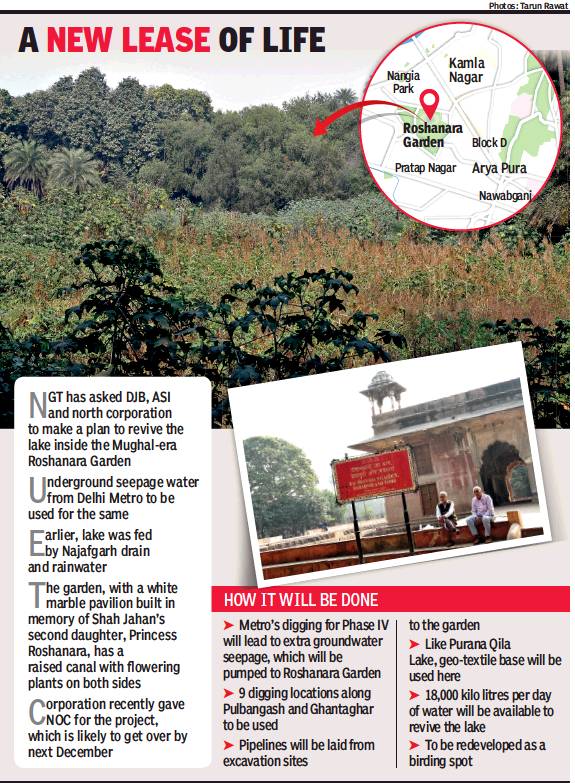Delhi: Roshanara Garden
(Created page with "{| class="wikitable" |- |colspan="0"|<div style="font-size:100%"> This is a collection of articles archived for the excellence of their content.<br/> Additional information ma...") |
|||
| Line 9: | Line 9: | ||
[[Category:India |D ]] | [[Category:India |D ]] | ||
[[Category:Places |D ]] | [[Category:Places |D ]] | ||
| − | |||
=The Roshanara Lake= | =The Roshanara Lake= | ||
| Line 21: | Line 20: | ||
The lake was once a spot visited by migratory birds in the winter months. “It was fed by rainwater and channels from Najafgarh drain, but with change in the slope surfaces of the surrounding area and increased concretisation, it has remained almost dried up for a decade now,” said an official of the horticulture department of the north corporation. | The lake was once a spot visited by migratory birds in the winter months. “It was fed by rainwater and channels from Najafgarh drain, but with change in the slope surfaces of the surrounding area and increased concretisation, it has remained almost dried up for a decade now,” said an official of the horticulture department of the north corporation. | ||
| − | |||
| − | |||
| − | |||
| − | |||
The garden has a white marble pavilion built in the memory of the princess, who died in 1671 and is buried there. The Roshanara Club, started by the British in 1922, retains 22 acres of the garden area. | The garden has a white marble pavilion built in the memory of the princess, who died in 1671 and is buried there. The Roshanara Club, started by the British in 1922, retains 22 acres of the garden area. | ||
| − | |||
| − | |||
| − | |||
| − | |||
| − | |||
| − | |||
The garden has a white marble pavilion built in the memory of the princess who died in 1671 and is buried there. The Roshanara Club, started by the British in 1922, retains 22 acres of the garden area | The garden has a white marble pavilion built in the memory of the princess who died in 1671 and is buried there. The Roshanara Club, started by the British in 1922, retains 22 acres of the garden area | ||
Revision as of 21:49, 31 December 2018
This is a collection of articles archived for the excellence of their content. |
The Roshanara Lake
2018: restoration efforts

From: Paras Singh, Dry for decades, Roshanara lake to get its mojo back, and maybe birds too, December 26, 2018: The Times of India
A lake in a beautiful Mughal garden ambience might not just be a picture painted by medieval miniaturists if the North Delhi Municipal Corporation is able to revive the waterbody in Roshanara Bagh. On the directions of National Green Tribunal, the civic body has finalised the plan for restoring the old lake in the Mughal garden built by Roshanara Begum, the second daughter of Emperor Shah Jahan, at what is now Shakti Nagar near the Kamla Nagar clock tower.
The lake was once a spot visited by migratory birds in the winter months. “It was fed by rainwater and channels from Najafgarh drain, but with change in the slope surfaces of the surrounding area and increased concretisation, it has remained almost dried up for a decade now,” said an official of the horticulture department of the north corporation.
The garden has a white marble pavilion built in the memory of the princess, who died in 1671 and is buried there. The Roshanara Club, started by the British in 1922, retains 22 acres of the garden area.
The garden has a white marble pavilion built in the memory of the princess who died in 1671 and is buried there. The Roshanara Club, started by the British in 1922, retains 22 acres of the garden area